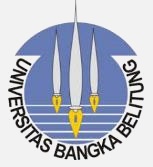FRAMING STRUCTURE IN RADICAL ISLAMIC GROUP SOCIAL MOVEMENTS: CASE STUDY OF JAMA`AH ANSHARU KHILAFAH DAULAH NUSANTARA (JADKN) AND JAMAAH ANSHARUSY SYARIAH (JAS)
DOI:
https://doi.org/10.33019/berumpun.v3i2.34Keywords:
Social Movement, Framing, JADKN, JASAbstract
A social movement has various bases, one of them is religion. In the context of a social movement basic, religion can be an effective medium to mobilize people. Religion has a significant element to do the structural-developmental framing (framing process). The framing process can form a core of a moment and an event becoming a valuable experience. This experience will be organized to guide of doing an action. This research analyzes how the structure and the framing process that are done by two Islamic radical/extreme groups. While others analyze the framing structure from the media perspective, this research sees the actor of its social movement by taking the case study of Islamic radical organization namely Jama’ah Ansharu Khilafah Daulah Nusantara (JADKN) and Jamaah Ansharusy Syariahi (JAS). This research uses a qualitative method by doing an interview and document study as the technique of collecting the data. The result shows that other than similarity, these differences are found relating to the framing process and the structure executed by these two Islamic radical groups even though they are identified as the radical group as well.




